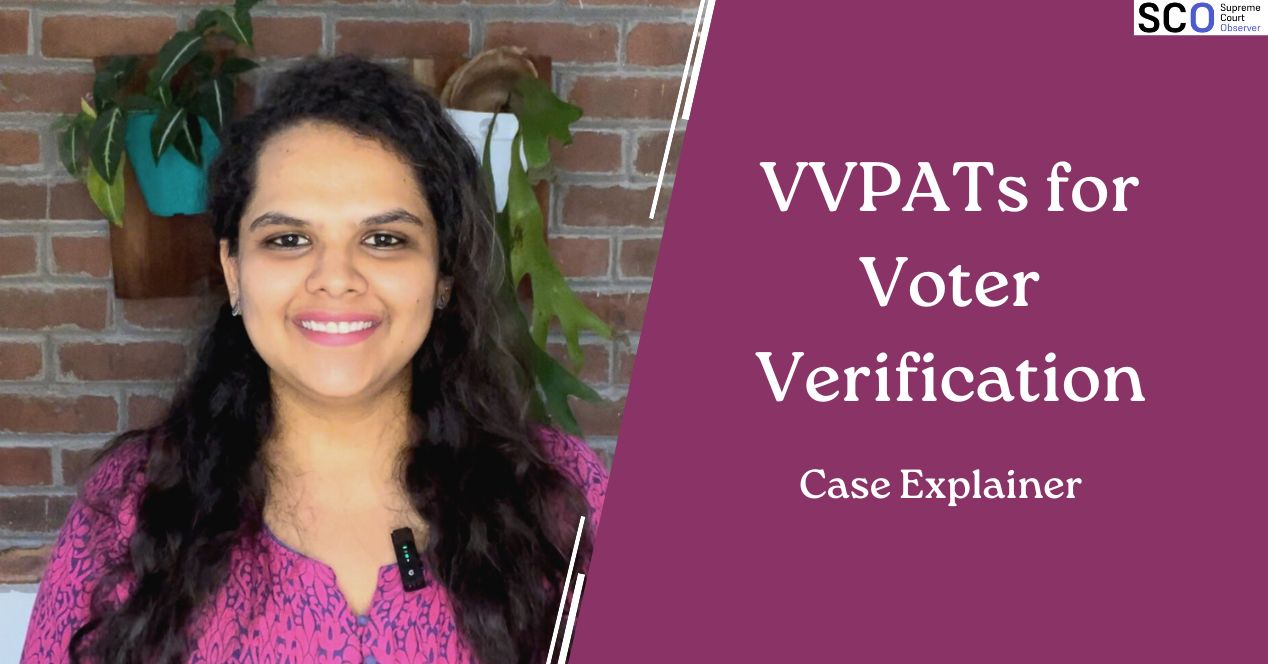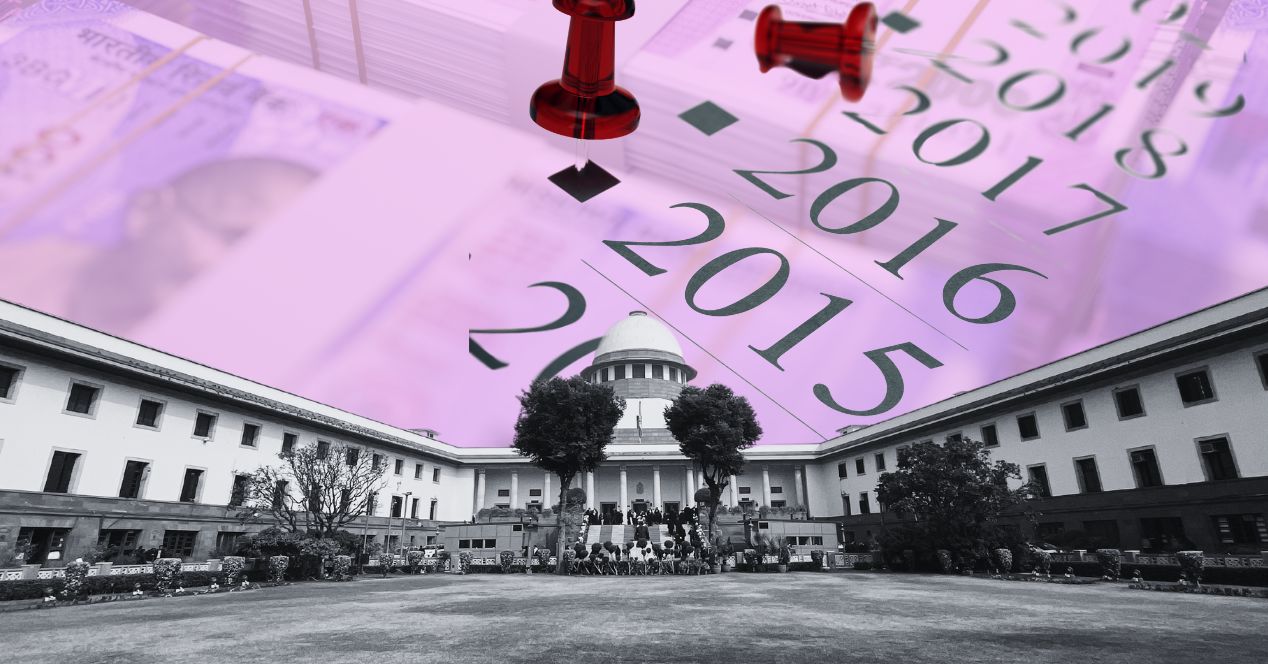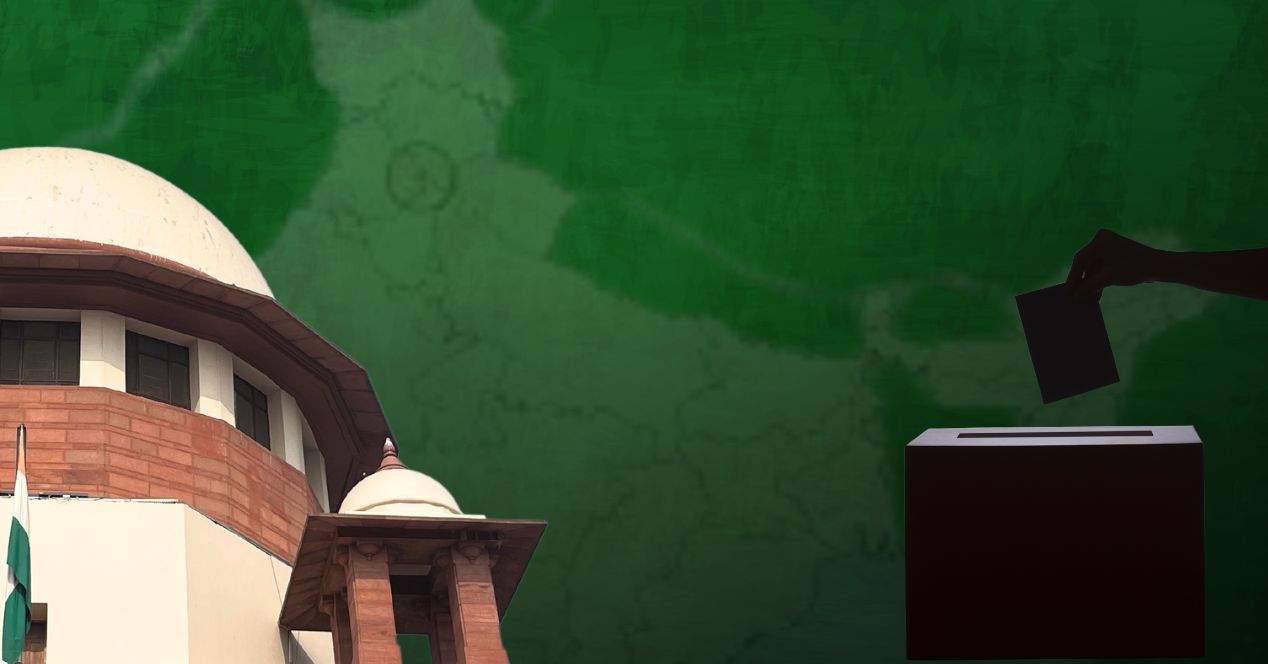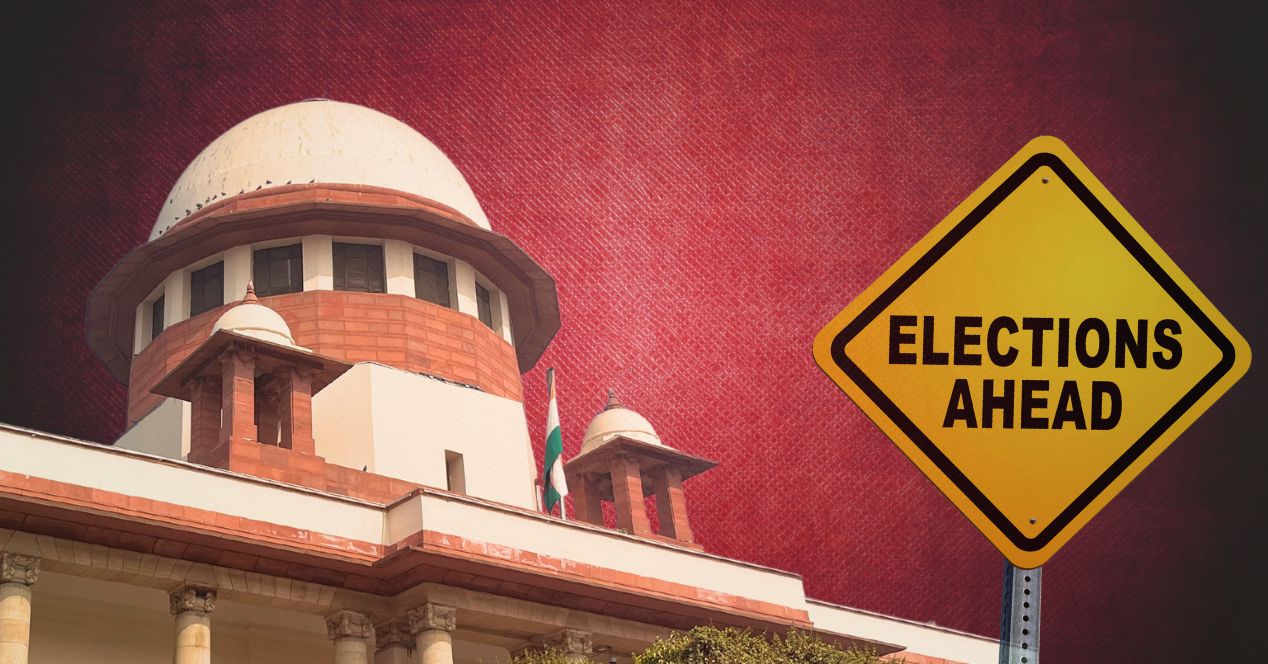Analysis
From Swamy to ADR: Nine VVPAT related cases decided by the Supreme Court
SCO lists key cases filed before the top court in the past decade seeking more transparency in the EVM-VVPAT system in India
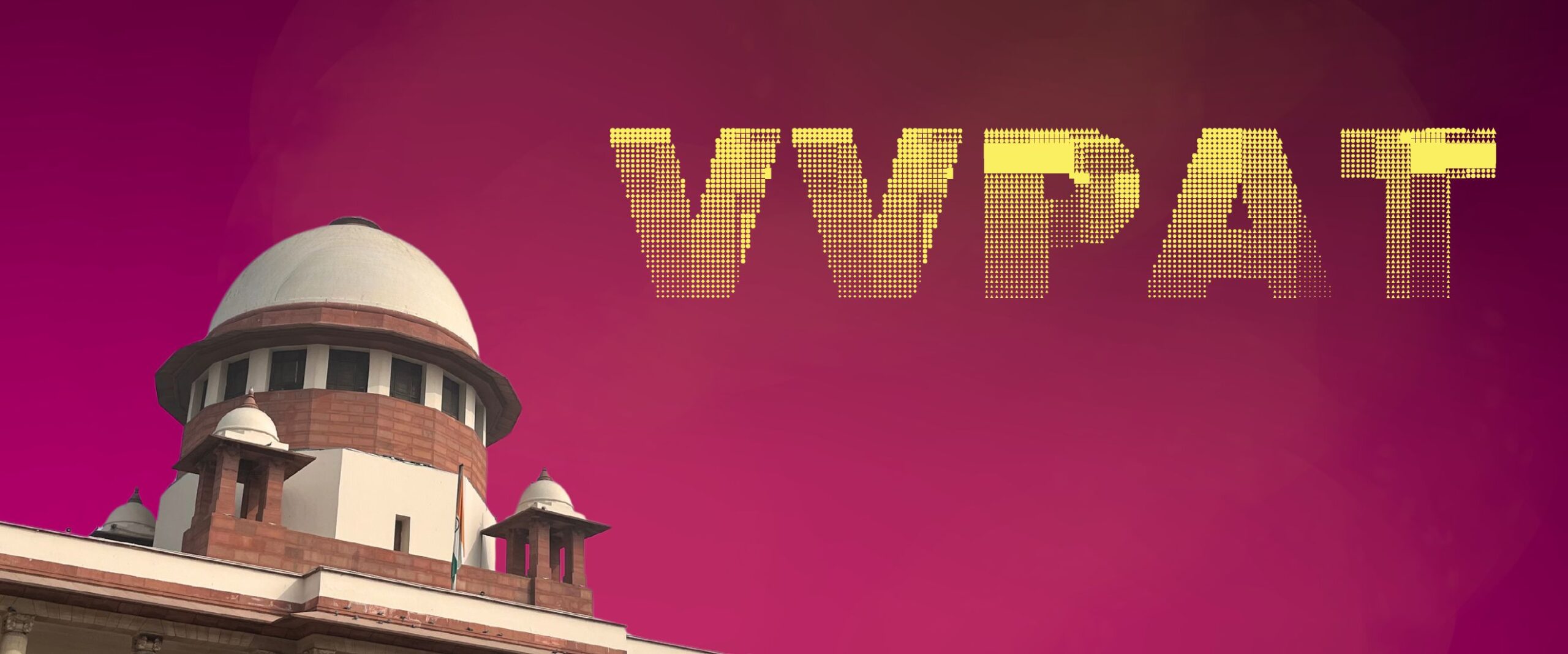
On 26 April 2024, a Division Bench of the Supreme Court in Association for Democratic Reforms v Election Commission of India (2024), rejected a plea seeking 100 percent verification of votes cast through Electronic Voting Machines (EVMs). On 10 May 2024, a review petition was filed at the top court against the Court’s decision.
EVMs were first deployed in India in the early 1980s. The 2004 General Election was the first time they were used for voting in all 543 parliamentary constituencies. Paper ballots were out and so was the tedious task of manually counting votes. But the switch was not without apprehensions—there are a number of transparency and tampering concerns around the use of EVMs.
The Supreme Court grappled with the issue for the first time in Subramanian Swamy v Election Commission of India (2013). The Court noted that vote-verification was crucial to the electoral process and recommended that EVMs be attached with Voter Verifiable Paper Audit Trails (VVPATs) to ensure transparency and reassure voters.
By then, the Conduct of Elections Rules, 1961 (‘1961 Rules’) were amended to introduce VVPATs and were notified on 14 August 2013. The 2019 General Election saw VVPAT machines paired with every EVM for the very first time.
Between Subramanian Swamy and Association of Democratic Reforms, a number of cases have been filed before the top court, each seeking a higher degree of transparency in the system. Some petitions have also prayed for a return to the paper ballot system. SCO lists out the cases and what the Court decided:
1) Subramanian Swamy v Election Commission of India (2013)
This was a civil appeal against a decision of the Delhi High Court. The petitioner Subramanian Swamy, a former Law Minister, , sought for the Court to issue a writ of Mandamus to the Election Commission of India to incorporate a system of “paper trail/ paper receipt” in EVMs.
The Supreme Court held that a paper trail was an “indispensable” requirement of free and fair elections and that the VVPAT system was the way to ensure transparency. The Court also noted that this would pose practical difficulties for the ECI. Therefore, it recommended that the system be introduced in “gradual stages or geographical-wise” in the 2014 General Election general elections. The Court also directed the Government of India to provide required financial assistance for the procurement of VVPAT units.
2) Kamal Nath v Election Commission of India (2018)
In this case, the petitioners sought for random VVPAT verification in 10 percent of the votes in the 2018 Madhya Pradesh assembly elections. The Court rejected the plea. It observed that over the last few decades, the ECI, as a constitutional authority, had built a reputation of an impartial body and that it had to be trusted.
3) Nyaya Bhoomi and Another v Election Commission of India (2018)
In this case, the petitioners filed a writ seeking a return to the ballot paper system instead of EVMs in both parliamentary and state legislative assembly elections of 2019. The Supreme Court dismissed the plea in November 2018.
4) N. Chandrababu Naidu and Others v Union of India (2019)
In February 2019, weeks before the General Election kicked off, then Andhra Pradesh Chief Minister N. Chandrababu Naidu and other political party leaders filed a plea at the Supreme Court. They sought to increase the mandatory VVPAT verification to 50 percent of the machines in every constituency. At the time, VVPAT verification was mandatory in just one polling station in each constituency.
A Division Bench of the Supreme Court emphasised that it trusted the Election Commission and that its fairness and integrity was not being doubted. In addition, the Court noted that “if the number of machines which are subjected to verification of paper trail can be increased to a reasonable number, it would lead to greater satisfaction amongst not only the political parties but the entire electorate of the country.” Therefore, the Bench increased the mandatory VVPAT verification from one to five randomly selected voting stations in each assembly constituency.
5) Tech for All v Election Commission of India (2019)
The petitioners asked for 100 percent vote verification through VVPAT. The Court dismissed the plea, noting that they had already dealt with a similar issue in N. Chandrababu Naidu.
6) C.R. Jaya Sukin v Election Commission of India (2021)
First filed before the Delhi High Court, this writ petition also sought a return to paper ballots. The Supreme Court dismissed the plea on the ground that the petitioners could not place any material on record to showcase the shortcomings of EVMs.
7) Madhya Pradesh Jan Vikas Party v Election Commission of India (2022)
The petitioners sought for the Court to issue a writ of Mandamus, asking information about EVMs such as their configuration and details about their hardware from the ECI.
The prayer also sought that the ECI properly uphold the requirements of Rule 49E(2) of the 1961 Rules, which obligates the Presiding Officer at every polling station to empty the storage and show to every polling agent that no votes were already recorded before the actual commencement of poll.
The petitioners also sought for a disclosure of EVM software to ensure that source code or programming were not manipulated to favour particular candidates.
The Court dismissed the plea noting that EVMs have been part of Indian elections “for decades now but periodically issues [were] sought to be raised. This [was] one such endeavour in the abstract.” It also noted that a Mandamus cannot be issued for enforcement of statutes.
8) Sunil Ahya v Election Commission of India (2023)
A writ petition was filed seeking independent audit of the source code of EVMs. A Division Bench of the Supreme Court dismissed the plea, noting that the ECI had to be trusted. The Court also observed that “the manner in which the source code should be audited and the way the audit should be dealt with bears on sensitive issues pertaining to the integrity of the elections.” The Court also noted that this was a “policy issue” which fell squarely within the ECI’s domain and there was no material to show that ECI was failing its duty.
9) Association for Democratic Reforms v Election Commission of India (2024)
The petitioners contended that the existing system where VVPAT verification was mandatory in only five randomly selected polling stations in a constituency was insufficient. The right to know that a vote is cast correctly, they argued, was a fundamental right. To this end, they sought a return to paper ballots or to have 100 percent VVPAT verification. They also suggested that a voter place the VVPAT slip in the sealed box themselves.
On 26 April 2024, as the second phase of the 18th Lok Sabha elections commenced, a bench comprising Justices Sanjiv Khanna and Dipankar Datta unanimously rejected the plea.
The 56-page judgement detailed the technology used in EVM-VVPATs. The judges also placed on record all safeguards adopted by the ECI to ensure free and fair elections. They cautioned against baseless apprehensions against the ECI and noted that a return of paper ballots was the weaker solution to transparency problems.

